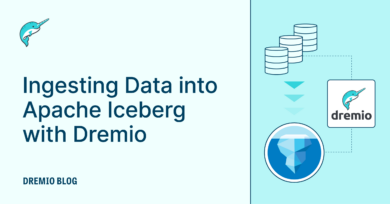4 minute read · August 26, 2019
The Missing Link on Data Lakes
· Director of Technical Marketing, Dremio

Big data, small data or just data, data lakes offer a solution for us to store all this data on its original shape and form. The fundamental principle of a data lake allows us to store data now so we can gain insights from it later. However, data lakes without proper cataloging, governance, security and ease of access will just become another stale data repository.
If you have ever borne any sort of responsibility for running or maintaining a business, you have likely learned just how critical it is to keep proper track of data. Ours is a digital day and age, and maintenance of the average business typically results in the accumulation of truly immense amounts of data necessary for the day-to-day running of the business.
Keeping this data secure, properly maintained is, oftentimes, the key to keeping the business productive and safe – after all, regular access to it is often highly necessary for your employees to conduct and maintain the various assets of your business throughout the day.
Data Lakes Are A Real Challenge
BI Tools work best when all your data is in a single, high performance relational database. But if you’re like most companies, your data is spread across many systems that cover a great variety of relational and non-relational databases, data formats, and sources.
Data Lakes on Amazon S3, Azure ADLS, Hadoop, and other systems store huge volumes of structured and unstructured data in a variety of different formats. These systems have limited abilities to process queries quickly. As a result, you copy data into a relational database to deliver the interactive experience your BI users expect.
Newer technologies like MongoDB and Elasticsearch manage data in JSON documents. These are rich data structures that limit what BI Tools do best. In addition, operational systems tend to perform poorly for analytical workloads, which can negatively impact their ability to meet demanding SLAs of the business.
What Are Your Options?
You could build a data warehouse, but these projects take many months to complete, are expensive, and complex to maintain. Data staging, ETL, data marts, cubes. It’s a massive undertaking.
Dremio Is The Missing Link For Data Lakes
Dremio simplifies and accelerates your access to data, no matter where it’s being stored. Dremio makes your favorite BI and data science tools better, without compromising any of the features you rely on for reporting and visualization.

Dremio processes the queries from your favorite BI tools to take advantage of highly optimized Data Reflections, accelerating your analytics up to 1000x.
Learn how Dremio can help you unlock your favorite BI and Data Science tools
Future Proof Your Analytics
Tesn years ago most companies weren’t using S3, Elasticsearch, MongoDB, or Hadoop. Over the next decade years, technologies will continue to evolve. Dremio makes your analytics future proof. Your developers can pick the right technology for building strategic apps, and no matter what they use Dremio will let your analysts keep using their favorite BI tools. Dremio accelerates your data, and makes your analysts more productive, today and into the future.
Learn more about our latest release
Accelerates Your Time To Insight
Typically your analysts are waiting for data as it moves from the source, through ETL, into the data warehouse, data marts, and eventually into cubes. With Dremio, your analysts can experience Self Service Data. They can use their favorite tools to connect to any data source immediately, without waiting on IT to move data through complex pipelines. Dremio makes your data fast, so queries are always interactive.
Learn more!
Checkout the following resources to learn how Dremio can help you make the most out of your data lake.
Sign up for AI Ready Data content


